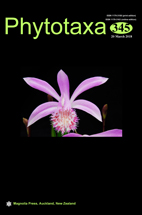Abstract
The presence of ‘carinoportulae’ was suggested to be diagnostic for the Order Orthoseirales and Family
Orthoseiraceae. Members of this group have been assigned to a single genus, Orthoseira Thwaites, which was diagnosed by also
lacking rimoportulae. The genus Cavernosa Stidolph is chain-forming, may have marginal spines, lacks carinoportulae and
possesses rimoportulae. Its placement among other members of melosiroid diatoms has not been settled, though its lack of
carinoportulae precludes its placement within the Orthoseirales. Species of both genera were described from aerophilous habitats.
Recently Orthoseira limnopolarensis Van de Vijver and Crawford was described from the South Shetland Islands (maritime region of Antarctica) with a unique combination of features, as it possesses carinoportulae and rimoportulae, the first species of the genus with this suite of characters. Cyclotella stipata Frenguelli, described from Neuquén Province, Argentina, is a species that according to the original illustrations shows characters similar to Orthoseira. Light and electron microscope observations of Frenguelli´s type material and more recent collections from Patagonia offer specimens with an elongated mantle, chain-forming frustules with thick marginal spines and presence of carinoportulae (like Orthoseira) and rimoportulae (like Cavernosa and O. limnopolarensis). Considering this unique combination of characters, we propose the new genus Guarreraea to encompass Cyclotella stipata and Orthoseira limnopolarensis. Its systematic placement relative to other genera assigned to the Order Orthoseirales is discussed.
The examination of additional materials from Neuquén deposited at the Frenguelli Collection revealed the presence of two other taxa with carinoportulae that are described as the new species, Orthoseira frenguellii and O. ferrarioana.

